Sea Days: August 10 - 12, 2025
- Cecilia Clark

- Sep 20
- 4 min read

The next morning, August 10, the plan for the day had changed. A passenger was having a medical emergency and needed to get back to a place in Greenland where he/she could be transported and get medical help. Exploration of Kane Basin ceased and the ship turned south with the initial plan to get to the airstrip in Qaanaaq (5 hours away). In the afternoon, the destination was changed to Ilulissat with an arrival time of about 10 am on August 12.
Greenland has helicopters for emergency use, but as the passenger's medical issue wasn't deemed a life or death emergency, the helicopters wouldn't pick him/her up in Qaanaaq.
The cruise schedule had 2 days built into it for exploring in Kane Basin or possibly another Plan B. Instead, we used the two days at sea to rush south as fast as the ship could rush to Ilulissat. We would then spend more time in Disko Bay.
Aboard ship there are a variety of lectures about Greenland, whales, birds, the native flora, and the history of Greenland. My favorite lectures were by Aleq Peary, an Inughuit living in Qaanaaq. He shared his knowledge about life in Northwestern Greenland. In addition to English, he speaks Inuktun. There are about 1,000 native speakers of Inuktun. Inuktun is a member of the Inuit branch of the Eskimo-Aleut language family.
Aleq spoke about how Inughuit live and why they hunt. He learned his hunting skills from his grandmother and his uncle. Here are some of the interesting hunting techniques he shared with us:
Springtime brings 24/7 daylight. In the summer, they use boats on the sea; the sea is their highway. Seals are hunted year round as are walrus, beluga, and narwhal. There is a Greenland wide yearly quota on how many polar bears and whales can be hunted by Greenlandic peoples.
In the summer walrus are hunted by boat. In the winter the hunters dogsled on old ice toward new ice because walruses prefer new ice as they can easily open a breathing hole. The hunters walk in each other's footprints stepping forward when the walrus breathes. This is done before the first snow because walking in snow is noisy. The tools for a winter hunt are a rifle, harpoon, an icepick, and a knife. When a walrus is harpooned, they move it to the old ice where it is butchered quickly before the animal freezes. It is easier to transport in pieces. The meat is divided among hunters based on an agreed upon system. Dogs are rewarded as helpers in the hunt.
To alert other hunters that a polar bear has been spotted, the hunter mimics the call of a raven. Ravens follow polar bears. Three experienced dogs are let loose from the sled to run toward the polar bear. The dogs bite at the bear's rear end. Then the younger dogs are let loose to participate as part of their training.
Narwhals are hunted by kayak with narrow, soundless oars because narwhals have excellent hearing. The hunters in kayaks wait near the ice edge for narwhals to come. Once spotted, the hunter kayaks quickly and silently toward the narwhal, readies the harpoon, and puts the sealskin bladder in the water. A new hunter will be the second harpooner. Once the harpooned narwhal surfaces, it is shot. The narwhal tooth (on male only) can only be sold in Greenland.
In the summer, their main source of income is selling narwhal skin to other parts of Greenland and to Denmark.
Arctic char is another food and income source in the summer. Summertime is also the time for preparing for winter by preserving through fermenting foods like Little Auks, drying fish, collecting Little Auk eggs, and freezing meats in freezers.
Autumn brings silence as birds leave and ice begins to form. Winter is dark and has another kind of silence with snowfall and the only sound is the howling of the sled dogs. They fish for halibut in the winter when the ice comes and it is dark. For this activity, they use snowmobiles. Since they aren't using dog sleds, they must be hyper aware of their surroundings.
To go on a hunt, they do use their dogs because the snowmobiles are too noisy when hunting animals. With dogs, it is quiet, fuel is not an issue, they eat snow, and they don't break down even over long distances. And, the dogs can smell the animals.
He pointed out that in Europe and the US there has been step by step development over the last 1,000 years. In Greenland they have only had 75 years to take those same steps. He said that when our grandparents were using planes to get around, his grandparents were wearing animal skins, living in turf houses, and making oil from seal or whale blubber. Now they can just turn on the heat.
Grandparents raised to be hunters evolved to raise school kids and workers. Their development has been so fast that some have been left behind. In his community and many others some people continue to have a choice of being a hunter and using the old traditions to survive. Aleq's young son has made the choice to be a hunter.
Animal skins are still used for clothing especially in the winter when it can be -30℃ or -40℃ with wind. Aleq said that nothing else will keep them warm enough. Summer wear is somewhat lighter by using seal skins and bird skins/feathers.
Heading south we left the sheet ice behind and were quickly amongst huge icebergs once again.
The closer we got to Ilulissat, the larger the icebergs seemed to be. At Ilulissat the patient and the doctor were tendered ashore. When the ship's doctor returned, the ship headed northward to explored Disko Bay. We watched a pair of humpback whales fishing while being chased by gulls. The gull activity made it easy to see where the whales were.
The day was beautiful, and we still had 24 hours of daylight so we did some zodiac cruising among the huge icebergs. The iceberg below was at least twice as large as the ship.
Kayaking tomorrow.








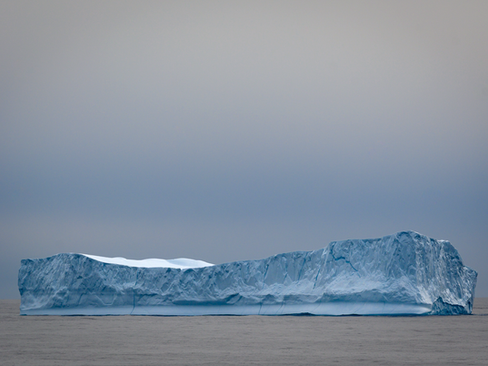













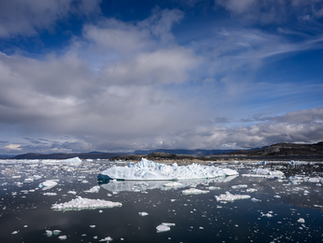

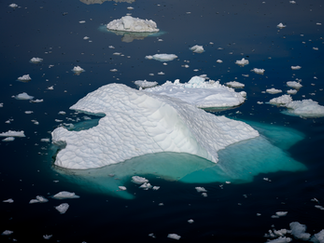



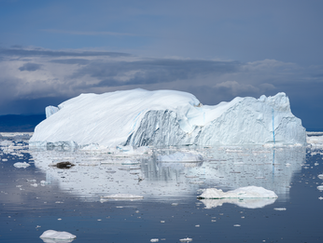





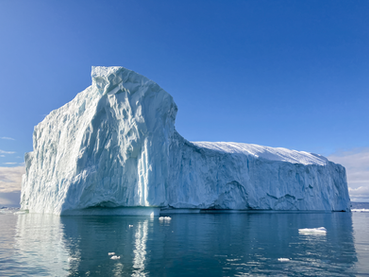









Comments